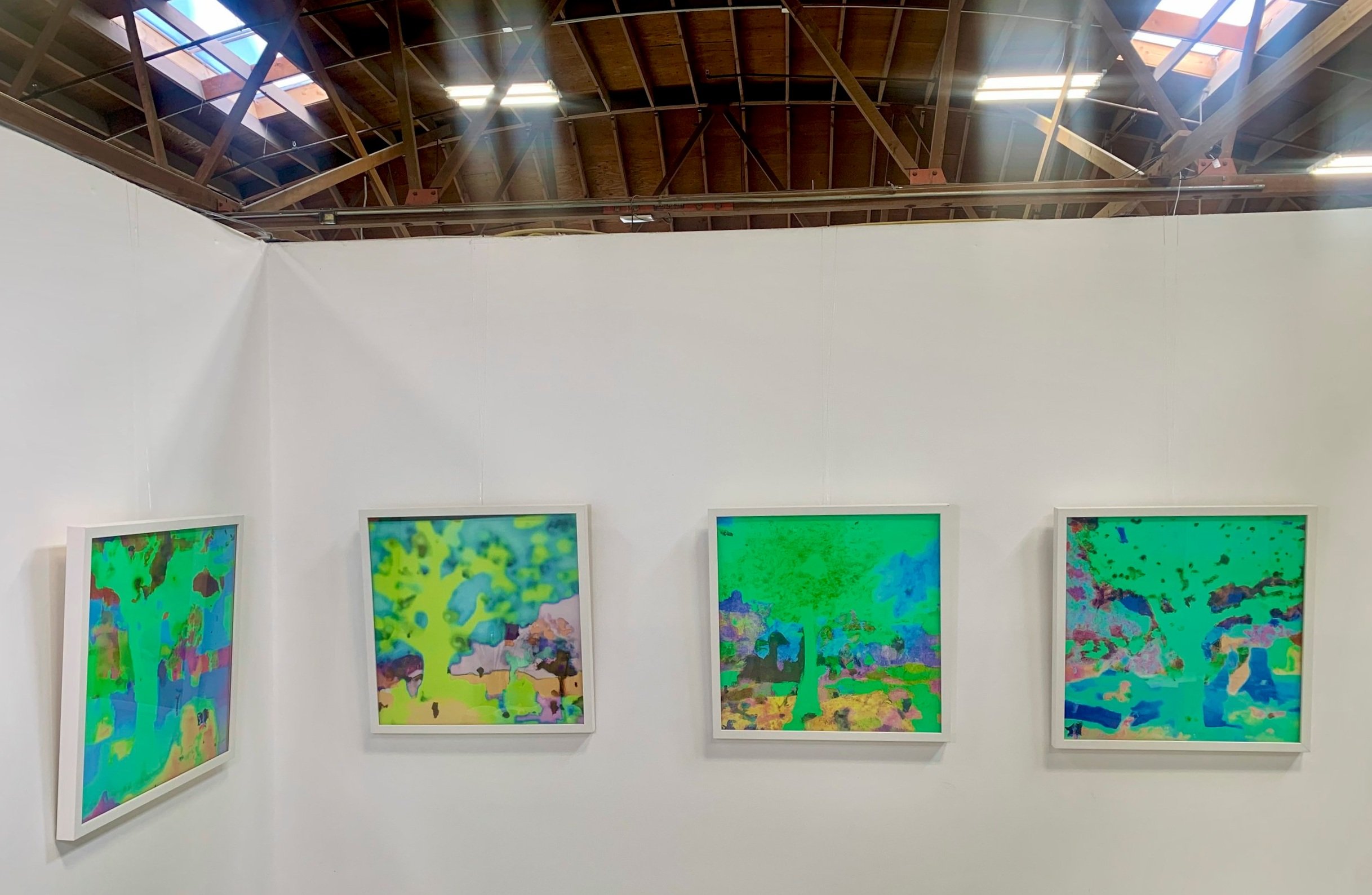
Semantic Segmentation
2022 - 23
Tree and River Segments, Found at Stow Lake
Oil and acrylic on canvas. 40"x36". 2023
Forest Vision Geography
Oil and acrylic on canvas. 24"x30". 2023
Tree and Palm Segments, Detected at Gill Tract Farm
Oil and acrylic on canvas. 16"x18". 2023
Tree Training
Pigment ink on archival paper. 20"x20". 2023
Landscape Machine
Pigment ink on archival paper. 20"x20". 2023
Finding Tree-like
Pigment ink on archival paper. 20"x20". 2022
Detection of Tree, Sky, Earth, Person, Hill
Pigment ink on archival paper. 20"x20". 2022
Semantic Segmentation
Pigment ink on archival paper. 20"x20". 2022
Machine Seeing Garden
Pigment ink on archival paper. 20"x20". 2022
Pre-Trained Garden Scene
Pigment ink on archival paper. 20"x20". 2023
About the series
Semantic Segmentation is a series of oil and digital paintings, made to reflect on the processes of AI perception and creativity. Drawing from years of scientific research, the artist developed her own unique methods for investigating AI, involving multiple cycles from physical materiality to abstract algorithm and back. The artist seeks to embody the AI, drawing from the AI’s tree interpretation while using her human hand and eye in a way the AI is not capable of.
Natural scenery as perceived through the eyes of an AI offers a source of contrast and inspiration. Nature is the original “training dataset” for the evolution of human vision and, indirectly, training input for AIs as they seek to mimic human vision. Given the rising presence of AI systems and the pressing issue of climate change, it is becoming increasingly relevant to consider how these AIs depict and interpret the natural world. On the back of several of the canvases, the artist has recorded the algorithm’s output legend, its visibility obscured analogous to the AI industry’s opacity.
Several of the works in this series are inspired from a tree in the 1565 painting The Harvesters by Pieter Bruegel the Elder at The Metropolitan Museum of Art, which The Met has called the “the first modern landscape painting.” Bruegel used the revolutionary technology of the time — linear perspective — to translate his 3D world to a 2D canvas, as artists have done ever since. Similarly, the artist uses the revolutionary technology of her time — AI — to do the inverse: regard a 2D image and perceive the 3D objects within it, creating a color-coded map of labeled regions – tree, plants, sky, people, etc.
Semantic Segmentation is a meditation on the interdependence of nature, evolving humans and evolving technology.









